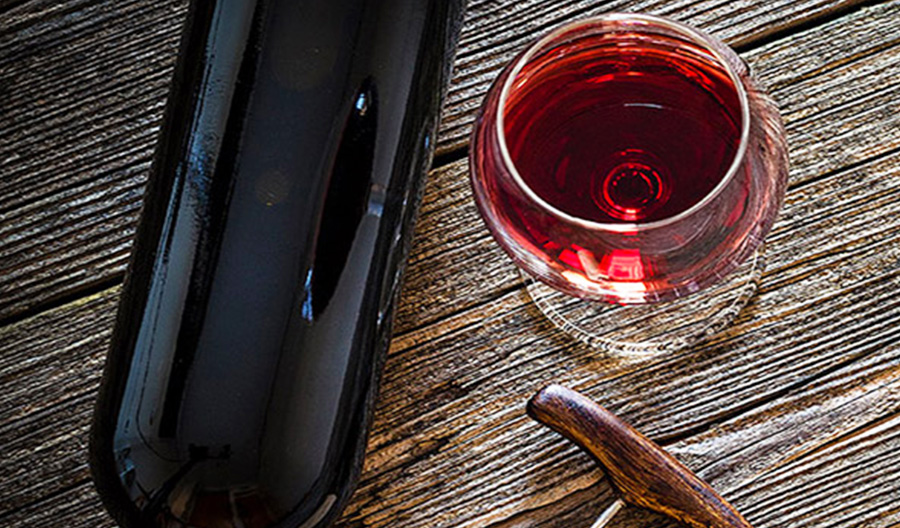Pinot Noir is one of the world’s most popular red wines. It’s made from black-skinned grapes that thrive in a narrow spectrum of cooler climates. It’s also notoriously difficult to grow. When done right, it produces lighter-bodied wines of elegance, complexity, and longevity.
What is Pinot Noir?
Pinot Noir is a black wine grape variety of the species Vitis vinifera that hails from France. It’s one of France’s oldest grapes, cultivated more than a century ago by the Cistercian monks in Burgundy. Today, collectors prize Pinot Noir for its finesse and age-worthiness, especially from the most famous vineyards in Burgundy. Due to its popularity and difficulty to grow, it’s one of the world’s most expensive wines.
Where does Pinot Noir come from?
While the origins of this ancient grape are not entirely known, Burgundy, France, has long been the spiritual home of Pinot Noir, where it produces some of the best single-varietal wines in the world. As the wines of Burgundy rose in fame and price, winemakers around the world sought to emulate the region’s success. This led to plantings of Pinot Noir throughout other parts of Europe and the New World.
However, Pinot Noir does better in cooler climates, as its trademark acidity, delicacy, and finesse disappear in warmer climates and hot weather. Today, the countries that produce the finest Pinot Noir are France, Switzerland, Germany, Austria, New Zealand, Australia, the United States (California, Oregon, and New York), and Chile. Because of its widespread popularity, Pinot Noir is considered an “international” variety.
What does Pinot Noir mean?
Pinot Noir is the name of a grape, and the single-varietal wine produced from that grape. The name comes from the French words for “pine” and “black,” a reference to the pine-cone shape of its clusters on the vine and the color of the grapes.
What does Pinot Noir taste like?
Typically, Pinot Noir is dry, light- to medium-bodied, with bright acidity, silky tannins, and alcohol that ranges between 12–15%. The best Pinot Noir taste has complex flavors that include cherry, raspberry, mushroom and forest floor, plus vanilla and baking spice when aged in French oak. Pinot Noir wine taste varies based on climate and producer style. Cooler climates produce more delicate and light-bodied Pinot Noir. Warmer climates produce riper and fuller-bodied Pinot Noirs with higher alcohol. Some producers age their wines in 100% new French oak which creates a fuller, textured wine.
Pinot Noir is the name of a grape, and the single-varietal wine produced from that grape. The name comes from the French words for “pine” and “black,” a reference to the pine-cone shape of its clusters on the vine and the color of the grapes.

How much alcohol does a bottle of Pinot Noir have?
The alcohol in Pinot Noir depends on where it’s grown. Climate influences ripeness, which influences alcohol levels. Pinot Noir from cooler regions like France and Germany often has 12–13.5% alcohol by volume (abv) but can range from 13.5–15% when grown in warmer climates like California and Australia. Cold and hot weather vintages also play a role in the wine’s final alcohol.
Is Pinot Noir dry or sweet?
It’s normal for consumers to ask: is Pinot Noir sweet? This question stems from the fact that Pinot Noir has lovely red fruit flavors and is juicy from its naturally high acidity. But the juicy fruit taste is not an indication of sugar. In fact, Pinot Noir is almost always made in a dry style.
A dry wine means that after the grapes are pressed, the sugar from the grape must is converted into alcohol by yeast. When all the sugar is converted, it creates a fully dry wine. Sometimes, a little sugar is left behind, called residual sugar (RS). This might be purposeful, to give a hint of richness and sweetness to the wine, or it might be because the yeast didn’t finish the fermentation. A few grams per liter of RS is still considered a dry wine, however.
How many calories are in Pinot Noir?
Pinot Noir is typically dry (see above). Of course, wine with little to no sugar doesn’t equate to wine without calories. Calories in Pinot Noir come from alcohol. Typically, a five-ounce serving of Pinot Noir has around 125 calories, or 625 calories in a 750 ml bottle. If a Pinot Noir has a touch of residual sugar, the wine will have carbohydrates, or carbs, but only a small amount. Dry wines usually range between zero and 4 grams of carbohydrates.
How should I serve Pinot Noir?
Pinot Noir has an ideal serving temperature range of 55–65°F. Pinot Noir can be delicate and fresh, or rich and oak-aged. You can serve lighter wines closer to 55°F, and fuller-bodied Pinots closer to 65°F. If you don’t finish a bottle of Pinot Noir, replace the cork, and stick it back in the refrigerator. The flavors will stay fresh for 1–3 days. Beyond that, the wine will start to oxidize.
Food pairings with Pinot Noir: what works and what doesn’t?
The best food pairings for Pinot Noir complement the wine’s pretty fruit flavors, bright acidity, and elegant style. These qualities make Pinot Noir a perfect partner to lighter red meats like duck and lamb, or white meats like turkey, pork, and chicken. Fuller-flavored fish like salmon go well or using bolder tasting cooking methods on fish as well. Earthy vegetables and herbs like mushrooms and thyme match the wine’s savory flavors, especially when folded into risotto and pasta.
Pairings that don’t work with Pinot Noir are foods that are dense and richly flavored. They can overpower the delicacy of the wine.

